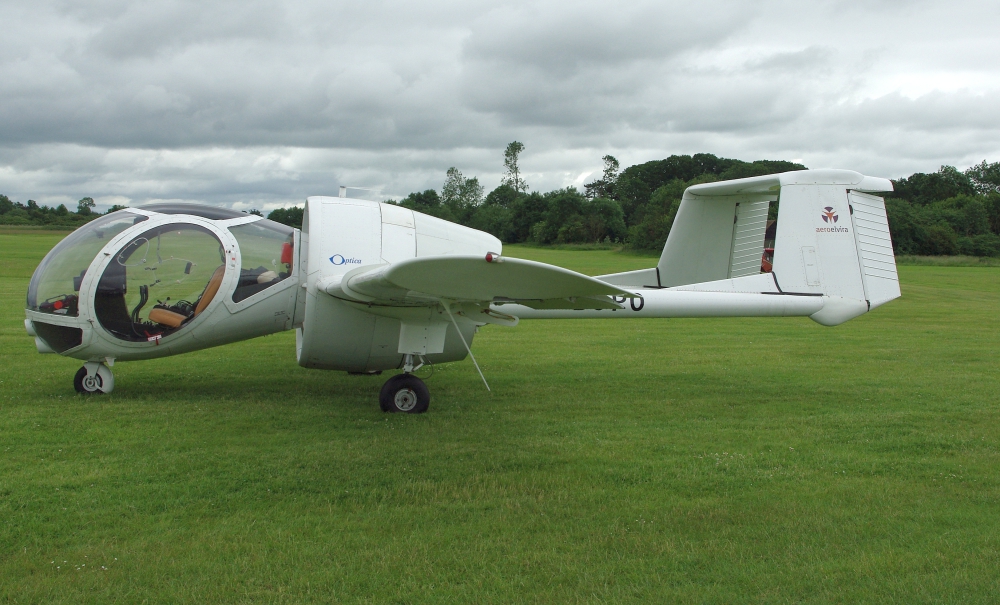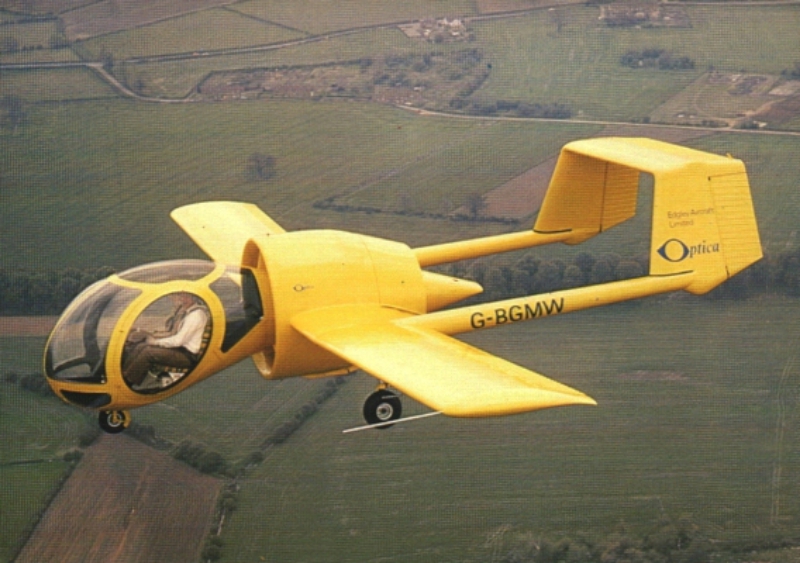This video delves deep into the captivating story of the Edgley Optica, an aircraft that promised to revolutionize aviation with its unique design and capabilities.
The Edgley EA-7 Optica is a British light aircraft designed for low-speed observation work, and intended as a low-cost alternative to helicopters. The Optica has a loiter speed of 130 km/h (70 kn; 81 mph) and a stall speed of 108 km/h (58 kn; 67 mph).
Design and development
The Optica project began in 1974 with a company, Edgley Aircraft Limited, formed by John Edgley who, with a small team, designed and built the original prototype. In 1982, institutional investors bought into the project and set up a production line at Old Sarum Airfield in Wiltshire. Over the next three years, the company was built up to full manufacturing capability, the aircraft received UK certification, and the first customer aircraft was delivered. Despite this success, the additional investment necessary for the final phase of full production was not forthcoming, the business went into receivership, and John Edgley was forced out. With new owners, aircraft on the production line were completed, and the Optica entered service.
The aircraft has an unusual configuration with a fully glazed forward cabin, reminiscent of an Alouette helicopter, that provides 270° panoramic vision and almost vertical downward vision for the pilot and two passengers. The aircraft has twin booms with twin rudders and a high-mounted tailplane. It is powered by a Lycoming flat-six normally-aspirated engine situated behind the cabin and driving a fixed pitch ducted fan. Due to the ducted fan, the aircraft is exceptionally quiet. The aircraft has a fixed tricycle undercarriage with the nosewheel offset to the left. The wings are unswept and untapered. The aircraft is of fairly standard all-metal construction, with a stressed skin of aluminium.
The aircraft’s distinctive appearance has led to it being known as the “bug-eye” in some popular reports.

Optica G-BOPO at Old Warden, 15 June 2014
From its inception in the 1970s by John Edgley to its current status, the Optica, is an aircraft that once stood as a symbol of innovation and potential in the aviation industry. The Optica, designed to offer the low-speed precision of a helicopter without its complexities, emerged as a sleek, efficient alternative.
Its dragonfly-like appearance, panoramic cockpit view, and quiet operation made it an ideal candidate for surveillance, scenic tours, and various other applications. Despite these advantages, the Optica’s journey has been fraught with challenges, from tragic accidents to market shifts and even arson.

The Optica’s fortunes fluctuated over the decades, highlighting its roles in surveillance, photography, and even its appearance in the 1989 movie “Slipstream.” The video provides an in-depth analysis of the Optica’s design, performance capabilities, and the various iterations it underwent through different ownerships and market demands. In the aftermath of 9/11, we examine the renewed interest in the Optica for intelligence and surveillance missions, considering its cost-effectiveness and operational advantages over drones and helicopters.
Top Photo: G-BOPN (cn 020) The Optica seen here during a display at Farnborough , it was also known as the flying Bug due to its appearance , it was for a time used by the Hampshire Police but during this time a tragic accident brought its service to a close .
Sources: Wikipedia; YouTube

